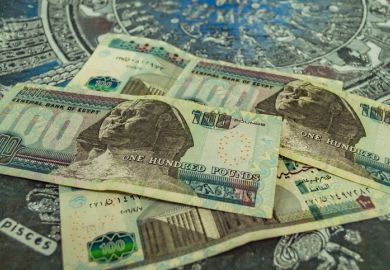“Money don’t make the world go round” is the Des’ree lyric immortalised by Ricky Gervais in his sitcom The Office. While most in the higher education sector might like to believe this sentiment, the bottom line is…well, the bottom line.
This is particularly evident in the world of university donations. Earlier this month, the University of Cambridge received a £17.5 million gift from husband and wife philanthropists, Bill and Weslie Janeway, to establish the Janeway professorship of financial economics within the Faculty of Economics. Sir Leszek Borysiewicz, vice-chancellor of Cambridge, called the donation “transformative”, while Sanjeev Goyal, chairman of the faculty, said it would “allow us to push the boundaries of teaching and research”.
Big words for a big gift. But where does this donation sit in relation to other acts of philanthropy in both UK and global higher education?
For a start, it doesn’t quite match the £20.1 million boon given to Imperial College London last year by hedge fund manager Alan Howard. The “.1” is very important, as it made the donation the largest sum ever given to a UK business school – an illustration of how much importance donors place on their offerings.
Elsewhere, the University of Oxford reported in May that its fundraising campaign had reached the £2 billion mark in record time, and it has now set itself the target of an eye-watering £3 billion. The headline figure was a £75 million contribution from writer Harriet Heyman and her husband, venture capitalist Sir Michael Moritz, to create the Moritz-Heyman Scholarship Programme. This was the biggest philanthropic gift for undergraduate financial support in European history.
In US higher education terms, though, £75 million is slight. And Cambridge’s £17.5 million? Chicken feed.
In June, John Paulson, a Wall Street hedge fund investor, poured $400 million (£256.5 million) into Harvard University. Mr Paulson had studied at Harvard Business School and wanted to repay his institution for his first-class education.
Last year, Gerald Chan, a property magnate from Hong Kong, also a Harvard alumnus, swelled his alma mater’s coffers to the tune of $350 million (£224.5 million). To put these gifts in perspective, in the space of just nine months, Harvard had been given more money than the 2013 GDP of St Vincent and the Grenadines. No wonder Nitin Nohria, dean of Harvard Business School, said Mr Paulson's donation would make certain people “tremble”.
And it's not just the Harvards and the Cambridges that are making the news. Earlier this month, Colorado State University announced a fourth consecutive year of record private fundraising, with the $172.3 million (£110.2 million) total beating last year’s haul by about $30 million. This was thanks largely to a $42.5 million gift from billionaire cable mogul John Malone and his wife, Leslie. The money is to be used to finance CSU’s new College of Veterinary Medicine and Biomedical Sciences Centre for the study of regenerative medical therapies.
It is likely that these donors will derive a touch of pleasure in being associated with such generosity, but not all philanthropists choose to go public. In 2007, the University of Chicago received a $100 million gift for undergraduate financial aid, but the donor decided to remain anonymous.
But enough of the US and the largesse of its donations. Are the figures more modest in Asia? Not if you look at the actions of business magnate Sir Li Ka-shing.
Already a substantial donor to US, Canadian and UK universities, Li gave his native University of Hong Kong 1 billion Hong Kong dollars (£82.6 million), through his charitable foundation, back in 2005.
In 2013, the same foundation awarded US $130 million (£83.2 million) to Technion – the Israel Institute of Technology – as part of a wider deal that saw the Israeli university partner with Shantou University in China to establish the Technion Guangdong Institute of Technology. Li has donated more than three-quarters of a billion dollars to Shantou University over a 30-year period: an astounding amount of money for an individual.
While we should be wary of the provenance of these benefactors’ billions, donations to universities can be an invaluable resource for institutions’ widening participation efforts – through scholarships and bursaries – and can improve the student/employee experience by paying for better facilities and infrastructure.
Register to continue
Why register?
- Registration is free and only takes a moment
- Once registered, you can read 3 articles a month
- Sign up for our newsletter
Subscribe
Or subscribe for unlimited access to:
- Unlimited access to news, views, insights & reviews
- Digital editions
- Digital access to THE’s university and college rankings analysis
Already registered or a current subscriber? Login






